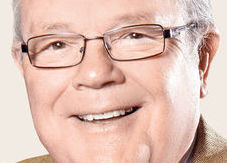By Peter W. Wagner
The “good old days,” when the hometown newspaper was often the only game in town, are gone forever. New digital platforms are arriving, and sometimes disappearing, quicker than an editor can shout “stop the press.”
But digital competition isn’t just upsetting the newspaper and shopper industry. Small town and major market radio stations, metro television stations and even the local cable services are also discovering this to be a time of significant financial crisis.
 Who would have thought, 10 years ago, that America’s host or popular radios stations would lose many of their once loyal listeners to SiriusXM, Pandora, Amazon Music, Apple Music and Spotify? Or that traditional network programming and local television affiliates would lose a huge percentage of their viewers to direct streaming competition like Netflix, Hulu, Sling, Virgo, Disney Plus, YouTube and Crackle?
Who would have thought, 10 years ago, that America’s host or popular radios stations would lose many of their once loyal listeners to SiriusXM, Pandora, Amazon Music, Apple Music and Spotify? Or that traditional network programming and local television affiliates would lose a huge percentage of their viewers to direct streaming competition like Netflix, Hulu, Sling, Virgo, Disney Plus, YouTube and Crackle?
And most surprising, who would have suspected that Google and Facebook would take so many dollars away from all earlier forms of advertising in big and small markets?
The truth is newspaper and shopper publishers have some difficult challenges ahead of them. Small markets have lost many of their larger advertisers. Younger audiences appear to have no interest in reading news in a printed form. The hawkers of the internet have convinced many advertisers that “print is dead.” The investment groups controlling the nation’s largest newspaper chains have no interest in operating a paper for the reason it was established but only for what profit it can return.
But here is the truth. The naysayers declared radio was dead when television blossomed into existence. However, according to FCC records, there are still 30,367 FM and AM radio stations in the United States today. And in many regions a single metro television operation now broadcasts as many as four networks — including one that is nothing but decades-old shows — with about the same size staff as when they were home to only one. It’s called reducing cost and maximizing revenue.
Newspapers and shoppers have one exceptional advantage over Google, Facebook, streaming channels and commercial television operations: a variety and abundance of important and valuable local news.
Still, there are some key considerations that publishers, editors and investors need to consider to stay vital and profitable this year and the years ahead.
Greater unification
Fifty years ago, the newspaper industry was energized by the establishment of central printing plants. Many were cooperatives, but almost all reached out to print smaller publications, relieving those publishers of stressful financial and employment issues.
In the future, the same approach to multi-paper centralization could be applied to other essential services: accounting, billing, ad design, editing, page design, circulation management and postal paper work, for example. The time could come when smaller publication editors and publishers choose to outsource areas difficult for them and concentrate on reporting, writing, sales or other disciplines they enjoy most. As with the introduction of central printing, these additional centralized services could result in reduced expenses and greater efficiency for all size publications.
Improved content
Being an excellent source of “all that’s’ local” will no longer be enough. Readers are going to demand, more top-quality content. Newspapers and shoppers will never “save themselves into success.” Content alone will drive change and growth.
But change takes talent and fresh ideas. Thankfully, for community papers, there are many excellent reporters and editors looking to move from some corporate daily to a weekly where they can feel secure and can excel.
Finally, paid and free distribution publications will need to be more nimble in 2021 if they are going to survive. From expanding their news coverage to responding to an advertising sales opportunity, publishers will need to learn to innovate faster.
Approach to advertising sales
The COVID-19 lockdown has changed the mindset of many Americans. We have become accustomed to staying close to home and buying, when possible, locally. There has been an increased focus on family, health and home.
But buyers have also learned to be more selective and restrained. Advertising will have to be more educational and persuasive. Local businesses are going to need more help in designing attractive layouts as well as writing detailed copy that will to an actual sale.
Additionally, community papers are going to find themselves creating and managing more actual, virtual and hybrid events to drive advertising sales as well as drive buyers to their community. The future for print is all about service. Sales teams and creative departments are going to have to overdeliver to succeed. That means providing even more original promotions and ad ideas and investing the time to make every ad the best it can possibly be.
Diversification
Wise publishers are going to need to diversify their strategies, business model and marketing. That might be something as simple as turning open floor space into a paperback book store or digital print center. Or it might mean offering local businesses regular material for their Facebook page or even professional design for their websites. I know of one paper that turned their old press area into a coffee shop. It created exceptional new traffic and provided a great opportunity for their news team to mix and mingle with the paper’s readers.
Reader satisfaction
Too many papers have forgotten that they exist primarily to report the news, support the community, lift the afflicted and afflict the self-serving. Gone are the opinion pages, heartwarming stories of social interaction, under-the-microscope investigations of local government, coverage of non-scholastic sports and in-depth reporting on health, business and education. In their place are far too many canned news releases.
Readers grew up expecting their hometown paper would always have all the details about all that is happening in their community. They can get headlines, rumors and tidbits from the internet and broadcast media; but they expect to get the details and the facts from their local paper.
There are many more ways hometown papers can reestablish themselves with community. Newspaper websites are going to have to expand the variety of what they offer while actually going live, for example. Shoppers are going to find new opportunities in areas where the local newspaper ceases publication. They’ll supplement their weekly advertising paper by producing, with freelance writers, lucrative bonus sections honoring that year’s graduates or promoting the community’s annual celebration.
Yes, there will be many changes in 2021. Some will seem disastrous, but many will be create exciting new revenue opportunities and lead to new heights of community involvement.
 Nevada Press Association The best in Nevada journalism since 1924
Nevada Press Association The best in Nevada journalism since 1924
